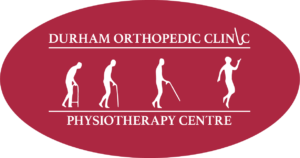As summer fades into fall, many of us are wrapping up a season full of outdoor activities. Whether you’ve spent your summer hiking, running, playing sports, or simply enjoying time outdoors, your body may be feeling the effects. Injuries, both minor and major, are common after a season of increased activity, and now is the perfect time to focus on recovery.
Common Post-Summer Injuries
The summer season brings a variety of outdoor sports and activities, but it also comes with its share of physical stress. Here are some of the most common injuries that people face after an active summer:
- Ankle Sprains: Hiking, trail running, and other uneven surfaces can easily lead to sprained ankles.
- Knee Pain: Overuse injuries, especially from running or jumping sports, can result in conditions like patellar tendinitis or runner’s knee.
- Shoulder Strains: Sports like tennis, swimming, and kayaking can lead to shoulder injuries, including rotator cuff strains.
- Lower Back Pain: Long hikes, bike rides, and prolonged physical activity can take a toll on the lower back.
- Muscle Strains: Overexertion from playing sports, lifting heavy objects, or high-intensity workouts can cause muscle strains, especially in the hamstrings and calves.
The Importance of Rest and Recovery
After an active summer, your body needs time to rest and recover. Ignoring minor aches and pains can lead to chronic issues that are harder to treat later. Taking the proper steps to recover now will set you up for better performance in the months ahead.
Rest and Active Recovery Tips:
- Rest: If you have an injury, the first step is to give the affected area rest. Avoid strenuous activities that could aggravate the condition.
- Active Recovery: Gentle movements like walking, swimming, or stretching can promote circulation without stressing injured areas.
- Hydration: Drink plenty of water to keep muscles hydrated, especially after long workouts or activities in the summer heat.
- Nutrition: Fuel your body with foods rich in protein and anti-inflammatory properties like leafy greens, berries, and omega-3 fatty acids.
3. How Physiotherapy Can Help Post-Summer Recovery
Physiotherapy is one of the most effective ways to treat injuries and promote full recovery after an active summer. A licensed physiotherapist can assess your injury, provide a personalized treatment plan, and help you get back to your favorite activities faster. Here are some ways physiotherapy can assist in post-summer injury recovery by providing the following:
Customized Treatment Plans:
- Physiotherapists can design a treatment program based on the specific nature of your injury, considering your activity level and goals. They may use a combination of manual therapy, therapeutic exercises, and modalities like ultrasound or electrical stimulation to promote healing.
Manual Therapy:
- Techniques like soft tissue massage, joint mobilizations, and myofascial release can help alleviate pain and reduce muscle tightness. These hands-on approaches also improve blood flow, speeding up recovery and improving flexibility.
Targeted Strengthening and Stretching:
- Weak or tight muscles often contribute to injuries. Physiotherapists can guide you through strengthening exercises to address muscle imbalances and specific stretches to improve flexibility. This will not only help with current injuries but also prevent future ones.
Pain Management:
- If you’re dealing with chronic pain after summer activities, physiotherapy can help manage it without relying on pain medications. Treatments like heat/cold therapy, acupuncture or manual techniques may be incorporated to provide relief.
Recovery Timeline: What to Expect
The time it takes to recover from an injury depends on its severity and your commitment to the recovery process. Here are some general guidelines for common post-summer injuries:
- Ankle Sprain: Recovery can take 2-6 weeks depending on the severity. Physiotherapy helps by restoring range of motion, strengthening the ankle, and preventing re-injury.
- Knee Pain: Recovery from knee pain varies. Mild cases can improve in 1-4 weeks with proper care, while more serious injuries may take 6-12 weeks. Physiotherapy is crucial for reducing pain and strengthening the muscles surrounding the knee.
- Shoulder Strain: Depending on the severity, shoulder injuries can take 4-8 weeks to heal. A physiotherapist will focus on mobility, flexibility, and strengthening exercises to promote full recovery.
- Lower Back Pain: Recovery from lower back pain depends on the cause, but most cases improve in 2-6 weeks with guided physiotherapy exercises and manual treatments.
- Muscle Strain: Minor muscle strains typically recover in 2-4 weeks. Stretching and strengthening exercises from a physiotherapist can accelerate recovery and prevent re-injury.
Preventing Future Injuries
Once you’ve recovered from your post-summer injury, prevention should be your next priority. Here are a few tips to keep in mind as you transition into fall activities:
- Stay Active Year-Round: Avoid the boom-and-bust cycle of intense activity followed by long periods of inactivity. Consistent movement keeps your body strong and flexible, reducing injury risk.
- Warm Up Properly: Always warm up before physical activity to prepare your muscles and joints for the workout ahead. Dynamic stretches, such as leg swings, can help.
- Incorporate Strength Training: Strengthening key muscle groups reduces the likelihood of overuse injuries. Make sure to include exercises for core stability, leg strength, and upper body endurance.
- Listen to Your Body: If you experience pain or discomfort, don’t push through it. Early intervention from a physiotherapist can prevent small issues from becoming serious problems.
Post-summer injuries are common, but with the right approach to rest, recovery, and physiotherapy, you can bounce back quickly and prepare for your next round of activities. Whether you’re dealing with knee pain from too much running or a strained shoulder from water sports, physiotherapy offers a targeted approach to healing and injury prevention.
If you’re experiencing lingering pain or discomfort after your summer activities, don’t wait. Reach out to our physiotherapists today by contacting 905-428-7800 to start your recovery and ensure you’re ready for whatever adventures the next season brings.


